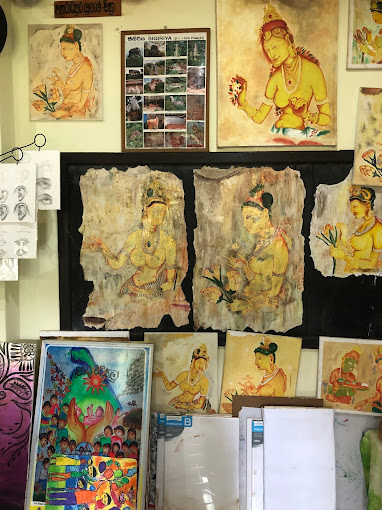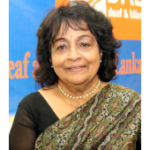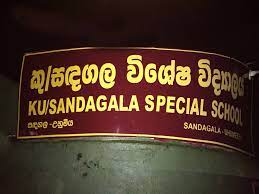
2009 – Kurunegala Sandagala Special School visit
School visit to Sandagala Uhumeeya Deaf And Blind School, Kurunegala – 2009
Priya and Nadani Welikala
A DAY OF DISCOVERY
Once again it was my privilege to visit KU/Sandagala special school, Uhumiya to handover personally the donation of the cheque of £1,500 – last year’s beneficiary of Dabal.
Unfortunately I did not have the pleasure of Feisal’s and Ameera’s company to visit the school, as I had planned prior to my departure from London. Unlike the earlier visits to schools who were beneficiaries of our charity – this was a very daunting experience, since we had no contact at all with the school or knowledge of its existence. I was on my own to research the identity of the school and to access the remote village of Uhumiya in the North West region of Kurunegala and, may I gently point out, to find time, travel costs and the energy, in my otherwise private busy and short visit to Sri Lanka.
I set off on Monday the 1st February in the company of our son Ossie and cousin Roshan leaving Colombo at 5:00 a.m. to avoid the heavy morning traffic on a busy week day, with a short stopover on the way for breakfast, at a wayside café. We reached the school at 11:00 a.m. To my surprise we drove into a large well established school compound where some students, turned out in immaculate white uniforms, were occupied with sports activities under the supervision of some staff members.
It was more an adventure trail finding the school in a rural environment with its scenic beauty and we to introduce ourselves as strange invaders of their privacy and insist for “On the spot inspection” of the school and their official records to satisfy DABAL’s required criteria before handing over the cheque.
As always in Sri Lanka we were welcomed by the principal, Mr K.A Sumithkumara and the administrator of the school Mr H.M K.S Illangakoon, with broad smiles and deliciously prepared tea which helped us to relax and enjoy the day’s experience.
The school was founded on 6th March 1968, with financial help of Mr S.H Benjamin and Mr W.R Perera, with four deaf and two blind children. The land was donated, with the original building, which is 150 years old, by Mr Narayana Mudiyandelage Appuhamy (1916-1974), the proprietor of Sathiyawadi Motors and Transport of Kurunegala – a successful businessman and philanthropist. He was appointed to the Senate (October 1965 – November 1971).
At present the school consists of 135 students and 26 staff members. The staff salaries are paid by the Government and they provide the textbooks and school uniforms for each child for the year. Most students are mainly from the impoverished North Central Province of Sri Lanka. They are provided with board and lodging in the school. The school is well established and very well run by the School Hostel Welfare Society, which consists of the local government officials and members of the public. The school is in desperate need of additional toilet facilities and fans, at present.
The school provides educational facilities up to GCE O.L classes and vocational training in painting, carpentry, manufacturing of coconut palm product, agriculture and computer skills. Seventeen students from the school have gone on to qualify as graduates and are employed in varied fields – which is a heart warming success story.
I was taken around the whole school and hostel premises for inspection. The kitchen was busy preparing the day’s main meal, with a large number of people cooking meals which brought the waft of spices and hunger in me! I was told that it was the local community who were preparing the food as Dhana to feed the students in memory of the Gramasevaka’s mother. They depend on the generosity of the villagers to feed the students who are unable to pay fees.

About The Owners
The school maintains a Bank account with Pradeshiya Co-operative Grameeya Bank and the Accounts are audited by the Kurunegala Division Education Secretariat. When the Principal received the cheque from me, in the presence of the Senior staff members, he expressed that the school had never received donations in cash – always only in kind and it was like winning the lottery. He thanked DABAL for its good work and kindness of thought and deed.
What touched me most was the kindness and generosity of the local people, who kept the school running, maintaining a good standard of education – providing good quality of life for these children in need, whose self confidence was amazingly striking.
The school is well worth a visit by all members of DABAL. Nadani Welikala

